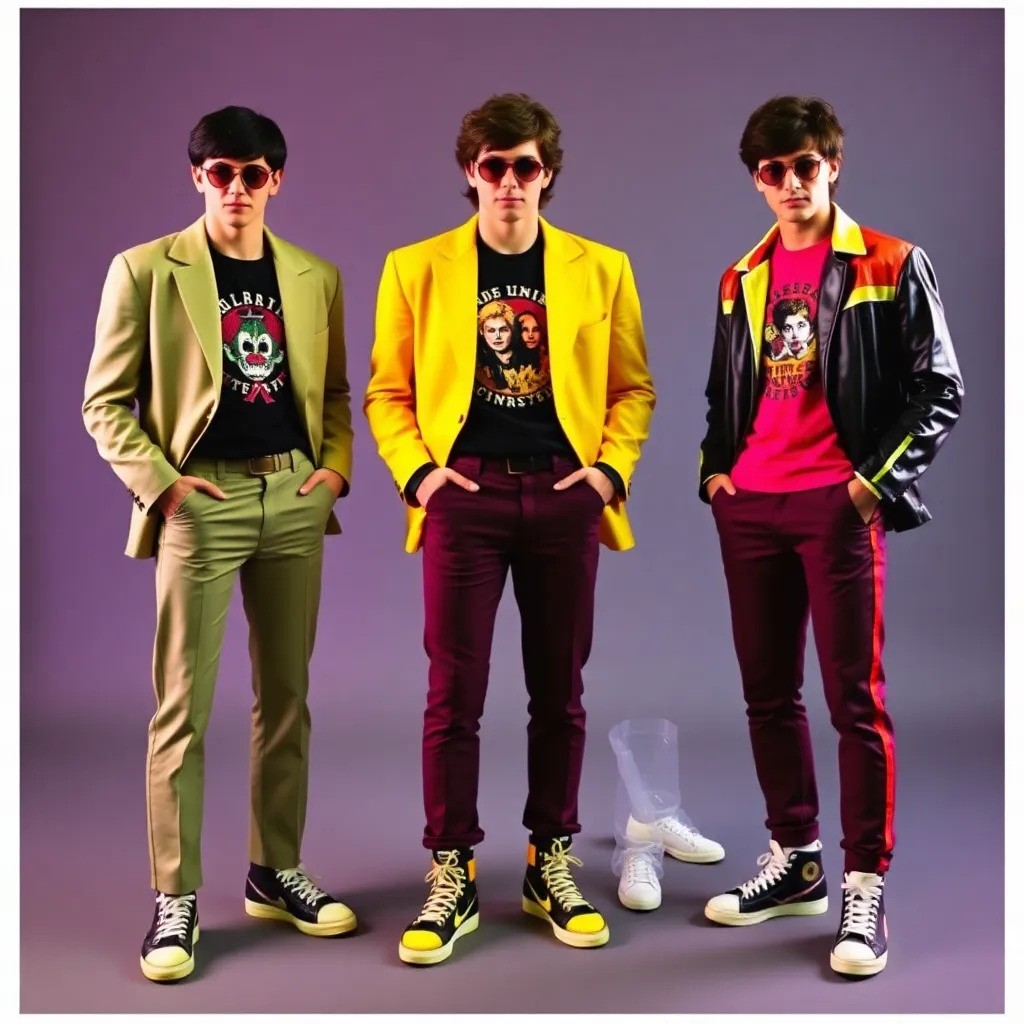80s men’s fashion was bold, vibrant, and eclectic, featuring power suits with broad shoulders, neon colors, leather jackets, graphic t-shirts, high-top sneakers, and relaxed athletic wear. It blended influences from pop culture, punk, and hip-hop, focusing on individuality and self-expression.
80s men’s fashion was all about boldness and fun. I loved the wide-shouldered suits, leather jackets, and neon colors that made a statement. Graphic t-shirts and high-top sneakers were my go-to, reflecting a sense of individuality and confidence.
what is 80s fashion men?
1980s men’s fashion was bold, extravagant, and diverse. It featured power suits with wide lapels and padded shoulders, symbolizing corporate success. Casual wear included graphic t-shirts, denim jackets, and tracksuits, influenced by pop culture and hip-hop.
Bright neon colors and geometric patterns dominated, while leather jackets and sneakers became streetwear staples. The era embraced individuality with varied looks, from preppy to rock-inspired styles.
What influenced 1980s fashion for men?
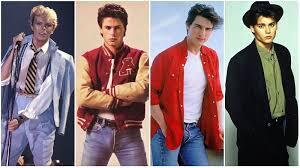
1980s fashion for men was influenced by several key factors:
1. Pop Culture & Music:
Icons like Michael Jackson, Prince, and Madonna, as well as rock bands and hip-hop artists, set trends that shaped men’s clothing. The bold and expressive styles of these stars influenced everyday fashion, especially graphic tees, leather jackets, and athletic wear.
2. Movies and TV Shows:
Popular films like Top Gun, The Breakfast Club, and TV shows like Miami Vice contributed to the rise of certain trends. The “cool” and “rebellious” looks from these films, such as aviator sunglasses, bomber jackets, and casual yet polished styles, became iconic.
3. Corporate and Power Dressing:
The 1980s were marked by economic growth and the rise of corporate culture, leading to the popularity of “power suits” with oversized shoulder pads and sharp, structured silhouettes as symbols of success.
4. Hip-Hop and Streetwear:
The emerging hip-hop scene introduced sportswear brands like Adidas and Nike, along with baggy pants, tracksuits, and high-top sneakers, which became mainstream casual attire.
5. Punk and Rock Movements:
The punk rock and glam rock movements had a significant influence, bringing leather jackets, studs, band t-shirts, and rebellious styles to the forefront of men’s fashion.
How did men’s hairstyles in the 1980s reflect the fashion trends of the time?
Men’s hairstyles in the 1980s reflected the bold and expressive fashion trends of the time. Popular styles included voluminous hair, often achieved through the use of mousse and hairspray, to complement the oversized, structured clothing.
The mullet, with short hair in the front and long hair in the back, became an iconic symbol of the era. Spiky hair, especially with gel or mousse, was common among those influenced by the punk and rock scenes.
Overall, 1980s hairstyles embraced individuality, with men experimenting with dramatic styles to match the vibrant, rebellious spirit of the decade.
Read also: Emilie Vollard Proebo – Leaders in Environmental and Social Responsibility!
What was the iconic “power suit” and why was it so popular in the 1980s?
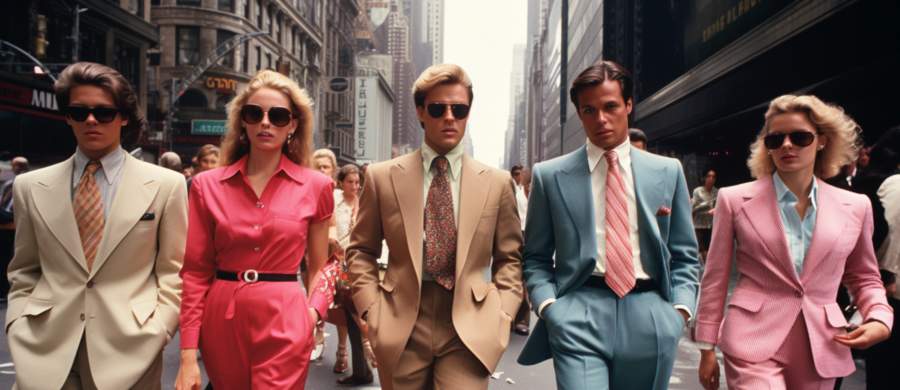
The “power suit” of the 1980s was a sharp, tailored suit with broad shoulders and wide lapels. It was popular because it made people look confident and powerful, especially in business. The suit was a symbol of success and professionalism.
right colors and bold patterns were often used to make a statement. It became iconic in the corporate world, representing the ambition and focus on success during the decade.
What was the role of shoulder pads in 1980s men’s fashion?
Shoulder pads played a key role in 1980s men’s fashion by creating a strong, angular silhouette. They were often added to suits, jackets, and blazers to make the wearer appear more powerful and authoritative.
The exaggerated shoulders were part of the “power dressing” trend, reflecting confidence and success in the corporate world.
Shoulder pads also balanced out the wider lapels and structured suits that were popular at the time. Overall, they became a symbol of strength, both in fashion and in the culture of the 1980s.
Read also: Lois Pocograno Linkedin Amazon – Everything You Need To Know!
What were the key trends in 1980s men’s fashion?
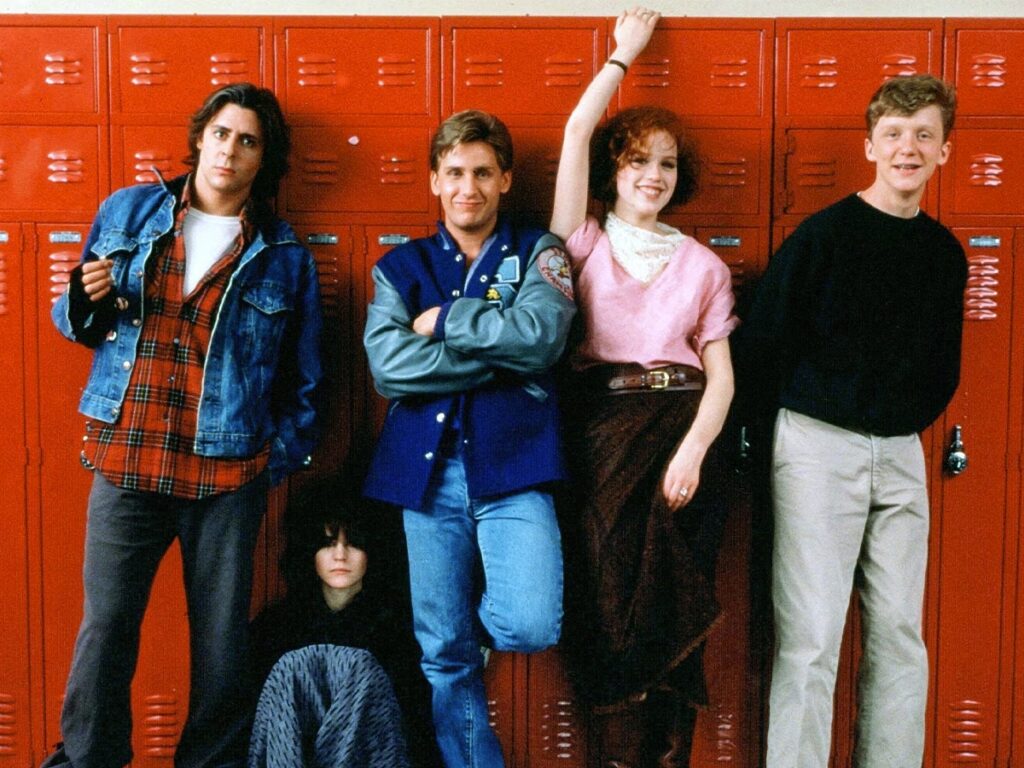
1. Power Suits:
Characterized by broad shoulders and wide lapels, power suits exuded confidence and success. Their bright colors made them striking and memorable, making them staples of business attire.
2. Acid-Washed Denim:
Acid-washed jeans and jackets gained immense popularity, featuring a faded, distressed appearance. This casual style became a go-to for everyday outfits, adding a rebellious edge.
3. Neon Colors:
The 1980s were vibrant with neon colors like pink, green, and yellow. These bold hues dominated clothing and accessories, serving as a daring fashion statement of the era.
4. Athleisure:
Tracksuits and sweatbands merged athletic wear with casual fashion, influenced by hip-hop culture and fitness trends. This sporty look prioritized both comfort and style.
5. Leather Jackets:
Often adorned with studs, leather jackets drew inspiration from punk rock culture. They represented toughness and rebellion, becoming essential for an edgy look.
6. Graphic Tees:
T-shirts featuring band logos or catchy slogans were a popular way to express personality and connect with pop culture. These tees paired well with jeans or shorts for a laid-back style.
7. Oversized Sweaters:
Baggy, oversized sweaters were trendy, offering a relaxed and cozy vibe. Frequently worn with jeans or khakis, they often featured bold patterns or bright colors for added flair.
8. High-Top Sneakers:
High-top sneakers from brands like Converse and Nike were the footwear of choice, popular for both sports and casual outings, showcasing a cool, sporty aesthetic.
9. Members Only Jackets:
These stylish jackets, known for their simple design and logo, became a fashion statement in the 1980s, often seen as exclusive and trendy outerwear.
10. Polo Shirts:
Polo shirts with popped collars epitomized the preppy style, suitable for both casual and dressed-up occasions. Their neat appearance made them a favorite among many.
11. Layered Outfits:
Layering t-shirts over long-sleeve shirts was a fashionable approach, creating a fun and versatile look that suited various occasions and personal styles.
12. Fanny Packs:
Worn around the waist or slung over the shoulder, fanny packs offered practicality and convenience, quickly becoming a trendy accessory for easy access to essentials.
What were the most popular footwear trends for men in the 1980s?
High-top sneakers were a significant fashion trend in the 1980s, symbolizing both style and athleticism. They were popularized by basketball culture, with iconic brands like Nike and Converse making them a staple.
The high-top design provided ankle support, making them practical for sports while also offering a bold, trendy look. These sneakers became a key part of streetwear, blending comfort with style.
High-top sneakers also reflected the growing influence of sports and hip-hop culture on mainstream fashion during the 1980s.
Read also: Cool:92gbuagxunc= Drawings – Start Creating Your Unique Art Today!
What were popular fabrics in men’s fashion during the 1980s?
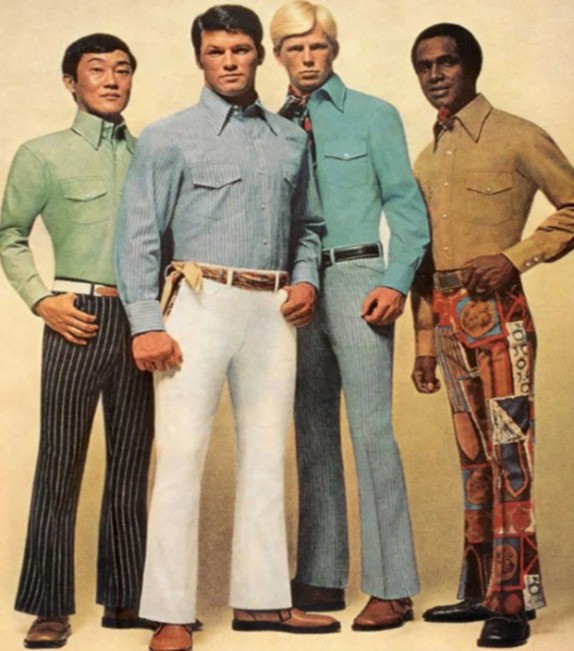
The 1980s was a dynamic decade for men’s fashion, showcasing a variety of fabrics that defined its bold styles and cultural influences. Here’s a simplified overview of how key fabrics contributed to the iconic looks of the era:
1. Denim:
Acid-washed denim became a staple, symbolizing casual wear and youth rebellion. Denim jeans, jackets, and vests were essential for everyday outfits and were heavily influenced by rock and new wave music.
2. Leather:
Leather jackets were a hallmark of toughness and rebellion, especially in punk and rock circles. Popularized by figures like Billy Idol, these jackets, along with leather pants and accessories, represented a daring style.
3. Polyester:
This fabric was central to the power-dressing trend, often seen in sharp, tailored suits. Designers embraced bold colors and structured silhouettes, making polyester a go-to for both corporate and evening wear.
4. Cotton:
Versatile and breathable, cotton was widely used for casual shirts, t-shirts, and shorts. It paired well with denim and was perfect for the relaxed, laid-back styles of the decade, often featuring graphic designs that reflected pop culture.
What was the influence of rock and roll on 1980s fashion for men?
Rock and roll strongly influenced 1980s men’s fashion by promoting a rebellious, edgy style. Leather jackets, band t-shirts, and ripped jeans became popular, reflecting the attitude of rock stars. Accessories like chains and bracelets were also common.
The influence of glam rock and metal brought bold, colorful clothes and big hairstyles. Overall, rock and roll inspired men to dress with confidence and individuality.
The 1980s was a transformative decade for men’s fashion, marked by bold styles, vibrant colors, and significant cultural influences. Several brands emerged as iconic during this period, shaping trends that are still relevant today.
Read also: Pulsecolon.com – Your Go-To Resource for Health Information!
How did Michael Jackson influence 1980s men’s fashion?
Michael Jackson had a huge influence on 1980s men’s fashion, with his bold and unique style becoming iconic. Here’s how he influenced fashion:
- Red Leather Jacket: His red leather jacket, especially from the Thriller music video, became one of the most iconic pieces of 1980s fashion. It symbolized his bold, pop star persona.
- Gloves: Michael popularized the single white glove, often sparkling or studded, which became a signature part of his style.
- Military-Inspired Jackets: Jackson often wore jackets with gold epaulets, military-style buttons, and a tailored fit, making this look fashionable for men.
- High Water Pants: He often wore pants that were cropped above the ankle, showing off his socks and shoes, a style that became popular during the decade.
Iconic Brands of the 1980s Men’s Fashion:
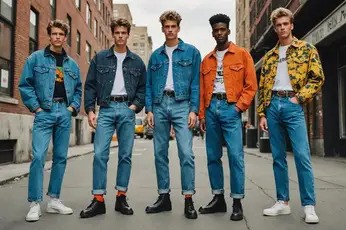
1. Giorgio Armani
Giorgio Armani revolutionized men’s formal wear with his relaxed yet sophisticated suits, characterized by soft tailoring and deconstructed designs. His influence was particularly notable in the power suit trend, which featured broad shoulders and bright colors, becoming synonymous with corporate success and ambition during the decade.
2. Calvin Klein
Calvin Klein became a household name in the 1980s, especially known for his minimalist aesthetic and innovative marketing strategies. The brand’s designer jeans and underwear campaigns redefined fashion advertising, emphasizing sexuality and desirability.
3. Ralph Lauren
Ralph Lauren epitomized preppy style with his Polo brand, which blended classic American aesthetics with casual luxury. Polo shirts, khakis, and blazers became essential items in men’s wardrobes, appealing to those seeking an Ivy League-inspired look.
4. Tommy Hilfiger
Emerging in 1985, Tommy Hilfiger quickly gained popularity for its classic American themes infused with modern flair. The brand’s bold colors and patterns defined casual wear and resonated with a youthful audience seeking a blend of traditional and contemporary styles.
5. Levi’s
Levi’s jeans were iconic throughout the 1980s, representing casual coolness and rebellion. The introduction of stone-washing techniques made Levi’s denim even more desirable, solidifying its status as a staple in both casual and fashionable wardrobes
6. Issey Miyake
Japanese designer Issey Miyake made waves in the fashion world with his innovative designs and use of technology in textiles. His pleated garments and bomber jackets became symbols of avant-garde fashion, challenging traditional silhouettes and offering a fresh perspective on menswear during the decade.
7. Vivienne Westwood
Vivienne Westwood was instrumental in defining punk fashion in the 1980s. Her designs often included elements like bondage trousers and graphic t-shirts that rejected mainstream aesthetics, making her a key figure in the punk movement.
8. Adidas
Adidas became synonymous with hip-hop culture during the 1980s, particularly through its tracksuits and sneakers worn by influential artists like Run DMC. The brand’s sporty aesthetic contributed significantly to the casual wear trend that dominated the decade.
How did the “Miami Vice” TV show influence men’s fashion in the 1980s?
The “Miami Vice” TV show had a major impact on 1980s men’s fashion, introducing a sleek, modern, and relaxed style that became iconic. Here’s how it influenced fashion:
- Pastel Colors: The show popularized pastel-colored suits, such as light pink, mint green, and sky blue, creating a laid-back yet stylish look.
- T-shirt Under Suits: Characters like Sonny Crockett, played by Don Johnson, often wore t-shirts under their blazers, giving a casual yet sharp vibe.
- White Linen Suits: The white linen suit became a symbol of luxury and tropical elegance, often worn without a tie for a more relaxed appearance.
- Loafers and No Socks: The trend of wearing loafers without socks became popular, reflecting the show’s casual, cool vibe.
- Ray-Ban Sunglasses: The show made aviator sunglasses from Ray-Ban iconic, contributing to the overall stylish, Miami-inspired look.
Read also: 99math: Secret Ingredients For Math Mastery!
What was the role of designer brands in 1980s men’s fashion?
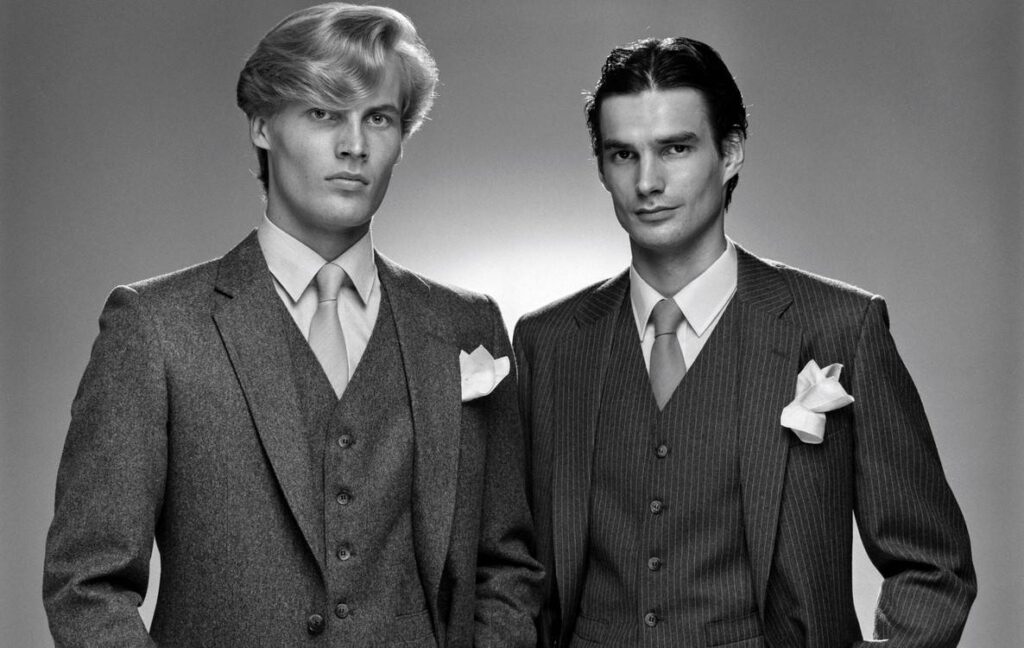
Designer brands played a major role in 1980s men’s fashion by symbolizing luxury, status, and success. Labels like Giorgio Armani, Ralph Lauren, and Hugo Boss were associated with the “power suit” trend, which was popular in corporate settings.
High-end designers introduced bold, structured, and sophisticated styles that reflected the era’s focus on wealth and achievement. Designer jeans, leather jackets, and accessories like watches and belts were also widely popular.
How did the use of denim change in men’s fashion during the 1980s?
In the 1980s, the use of denim in men’s fashion became more diverse and bold. Here’s how it changed:
- Acid-Washed Denim: Acid-washed denim became a popular trend, giving jeans and jackets a faded, worn-out look that symbolized casual, rebellious style.
- Denim Jackets: Denim jackets became a staple in both casual and streetwear, often paired with t-shirts or layered over sweaters.
- Double Denim: Wearing denim on both the top and bottom, also known as “double denim,” became fashionable, despite being initially considered a fashion faux pas.
- Denim Vests: Denim vests also gained popularity, often worn over graphic tees or layered with other jackets.
- Customization: Many people personalized their denim, adding patches, studs, or even distressing, making each piece unique and a form of self-expression.
Read also: Chrisley Knows Best Daughter Dies – Chrisley Tragedy!
FAQs:
1. Did men wear leather jackets in the 1980s?
Yes, leather jackets were very popular in the 1980s, especially in rock and punk culture. They were worn with band t-shirts and jeans. It was a symbol of rebellion and style.
2. How did 1980s men’s fashion embrace bright colors and neon?
Bright colors and neon were everywhere in the 1980s, from clothing to accessories. Neon pinks, greens, and yellows were especially popular. They gave off a fun and bold energy, influenced by pop culture.
3. What is the importance of graphic t-shirts in 1980s men’s fashion?
Graphic t-shirts became a way to show personal style, with logos, band names, and bold designs. They were a casual fashion choice worn with jeans. It was all about expressing individuality.
4. How did the 1980s fashion focus on individual expression?
Fashion in the 1980s was about standing out and showing off your unique style. People mixed different looks, like punk or preppy. It was all about personal identity.
5. Is 1980s fashion still relevant today?
Yes, 1980s fashion is still popular today. Many trends, like neon colors, graphic tees, and oversized jackets, are back in style. The bold, fun vibe of the ’80s continues to influence modern fashion.
Conclusion:
1980s men’s fashion was bold and expressive, featuring power suits, neon colors, and leather jackets. The era was influenced by pop culture, music, and movies, with trends like graphic tees and acid-washed denim. These styles focused on individuality and confidence, making 80s fashion timeless and still relevant today.
Read more:
